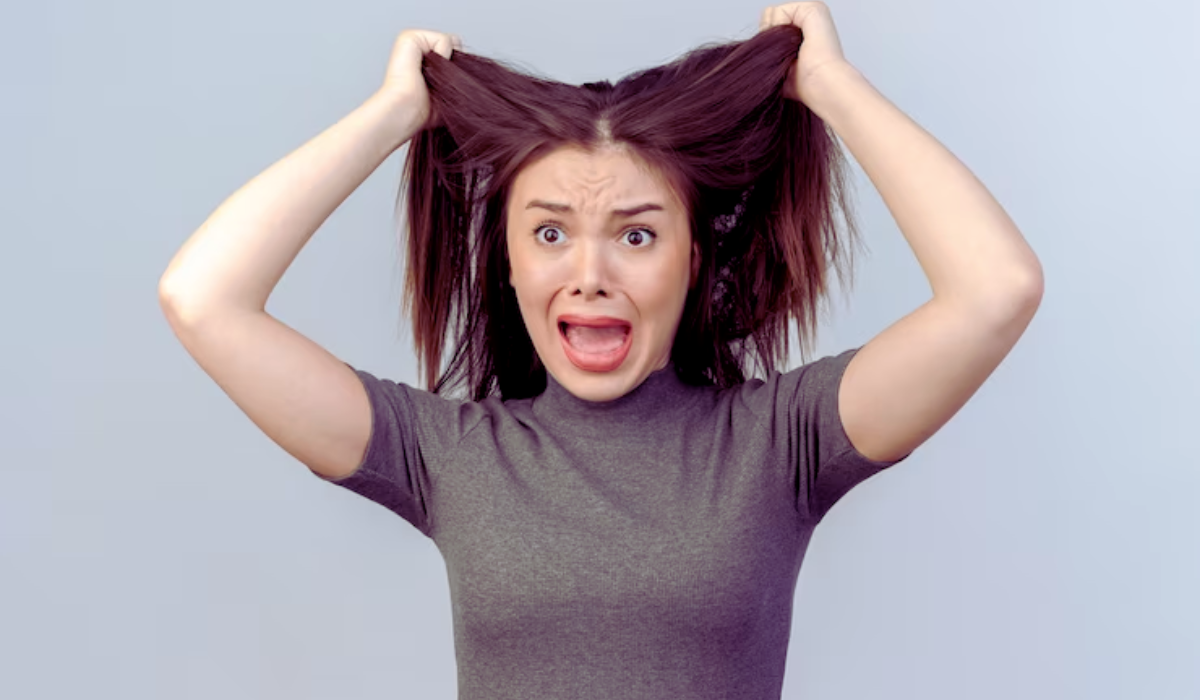Your hairline curls up due to genetics, hormones, excessive styling and heat damage. Understanding the underlying causes and taking appropriate measures to manage and prevent further curling is essential.
Genetics can play a significant role in determining the natural pattern of your hairline. Hormonal changes or imbalances can also influence how your hair grows, potentially leading to a curled hairline. Additionally, excessive styling, including heat treatments and harsh chemicals, can cause damage and alter the natural texture of your hair, contributing to a curled hairline.
By understanding these factors, you can make informed decisions regarding caring for your hair and preventing further curling of your hairline.
Genetic Factors Affecting Hair Texture
It is widely known that genetic factors play a significant role in determining hair texture, including the formation of a curled hairline. The inheritance of hair traits from parents greatly influences the curl pattern and texture of an individual’s hair. Additionally, specific ethnicities are associated with distinct curly hair patterns, with variations in hair follicles’ natural shape contributing to curls’ formation along the hairline.
Hormonal Influences On Hair
Understanding the factors influencing hair curling, such as hormonal changes, is essential for comprehending hairline modifications. Androgens play a significant role in influencing hair curling patterns, with variations often observed during pregnancy and puberty. These life stages are accompanied by substantial hormonal fluctuations that can impact hair texture, leading to curly hairline changes.
In addition, thyroid imbalances can also contribute to alterations in the hairline. Thyroid dysfunction can cause hair texture changes, including the curling up of the hairline. Recognizing the influence of hormonal factors, such as androgens and thyroid imbalances, on hair curling and understanding their effects during specific life stages is crucial for understanding why hairlines curl up.
Curl-enhancing Hydration Levels
Curly hairlines can be attributed to natural oil distribution and the impact of humidity on hair texture. Curly hair tends to be drier due to the shape of the strands, causing the oil to travel a shorter distance. This results in necessary hydration needing to be more efficiently distributed along the hair shaft. Furthermore, the texture of the hairline can be significantly influenced by environmental factors, such as high humidity. This can encourage the hair to absorb moisture from the air, causing it to expand and curl. Following a hydration routine that suits the hair type is crucial, ensuring that the hairline benefits from ample moisture.
Hairstyling Techniques Impact
Heat styling often contributes to hairline damage, causing the hair to curl up. Excessive heat tools such as flat irons and curling wands can weaken the hairline and alter its natural texture. Additionally, chemical treatments like perms and relaxers can lead to the hairline curling up due to the harsh chemicals used during these processes. On the other hand, protective styles such as braids and twists can encourage a curly hairline by reducing manipulation and preserving the natural pattern of the hair. It’s essential to be mindful of the hairstyling techniques and treatments you choose, as they can significantly impact the health and appearance of your hairline.
Recommended Hair Products For Curls
Understanding why your hairline curls up can help you choose the right hair products for your curls. For moisturizing curly hairlines, look for products with natural oils like argan or coconut oil. These can keep your hair nourished and hydrated. When defining your curls, serums and gels are your go-to products. Opt for aloe vera or shea butter-based serums to define your curls perfectly. It’s essential to choose hair care products that are sulfate-free and formulated specifically for curly hair. Also, consider products with proteins and vitamins to keep your hair strong and healthy.
Practical Tips For Flatter Hairlines
Proper brushing and combing techniques can help manage a curly hairline. A wide-tooth comb or a boar bristle brush can help smooth the hair and reduce its tendency to curl up. Additionally, employing blow-drying methods can result in straighter outcomes. Using a round brush while blow drying can aid in achieving a flatter appearance. When considering haircuts and hairstyles, opting for styles favouring straighter hairlines can also be beneficial. In conclusion, incorporating these tips into your hair care routine can help you manage a curly hairline and achieve the desired look.
Conclusion
You understand why your hairline curls up is crucial in maintaining healthy hair. Knowing the factors and methods to manage it, you can effectively protect and style your hair. Whether genetics, heat styling, or environmental factors, caring for your curls is essential for a happy and healthy hairline.
Frequently Asked Questions Of Why Does My Hairline Curl Up
Why Does The Hairline Curl Up?
Curly hair can affect the hairline due to genetic factors, hormone levels, and hair care practices. Curly hair tends to shrink when it dries, causing it to curl up at the hairline. Understanding the causes can help in managing and styling curly hair effectively.
What hair care practices can help manage a curled hairline?
Using a moisturizing and curl-enhancing shampoo and conditioner, avoiding heat styling and using a wide-tooth comb can help manage a curling hairline. Applying a leave-in conditioner and using a silk or satin pillowcase can also prevent friction and reduce hair breakage.
Are there any natural remedies for a curled hairline?
Natural remedies like applying aloe vera gel, coconut oil, or castor oil to the hairline can help moisturize and prevent frizz. Additionally, a homemade hair mask with ingredients like egg, honey, and yoghurt can nourish the hair and promote a natural curl definition.

